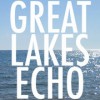This video game by the Entertainment Technology Center and The Field Museum of Chicago, funded by the MacArthur Foundation, lets you take over the Great Lakes, protect them, and learn about invasive species. In round one, you are the carp. Fight native perch for food (and watch them float up to the surface with X’s in their eyes) and get your carp friends to jump out of the water and knock boaters out of their boats. In the next round, you are the Carp Czar appointed to keep the carp out of Lake Michigan. You have to find the carp and build barriers to stop them from getting to the lake, all while keeping up public approval.









